I’m collaborating with expert coastal geologist/geomorphologist Chris Sharples to report on an unusual occurrence of boulders at the extreme northern tip of Bruny Island in southern Tasmania. The rounded, moderately-graded, mostly dolerite boulders (and cobbles) up to half a metre or so in size form an arcuate foreshore several metres high and extending a few hundred metres east from Dennes Point past Kellys Point.
Conservatively, some 15,000t of loose cobbles and boulders are exposed. About 10% of the material is Permian-age siltstone and sandstone cobbles and boulders, eroded from coastal cliffs and shore platforms to the east.
Recent coastal erosion has exposed dolerite boulders and cobbles present under sand on neighbouring beaches to the south, and a spit of dolerite boulders has formed between low and high water mark on Boulder Point.
Some say the boulder deposit is man-made – possibly ballast left by ships. A moment’s reflection shows this can’t be true: on the world stage, dolerite is a rare rock and is hardly likely to have been carried from overseas in large amounts by arriving ships; furthermore, departing vessels would either be in cargo or ballast, and if the latter, would hardly have dumped it just after leaving Hobart for the open sea. In any case, rounded boulders are scarcely a safe cargo in a rolling ship.
Dolerite boulders occur elsewhere on foreshores on the western side of the Derwent Estuary – notably from Taroona north to near Blinking Bill Point at Sandy Bay – where they are clearly being winnowed out of Tertiary-age boulder beds. On the northern tip of Bruny Island, Chris thinks the arcuate form of the boulder deposits wrapping around Kellys and Dennes Points is a rare recurved boulder spit, probably formed from winnowed boulders moved by storm swells refracting into the northern end of D’Entrecasteaux Channel.
Recurved sandy spits are a relatively common feature on the Tasmanian coast, but are rare in material as coarse as these boulders.
Locally, the boulders appear to be actively eroding from a weakly cemented conglomerate on Kellys Point. I think the conglomerate was formerly much more extensive, is probably Tertiary in age, and was the source material for the recurved spit.
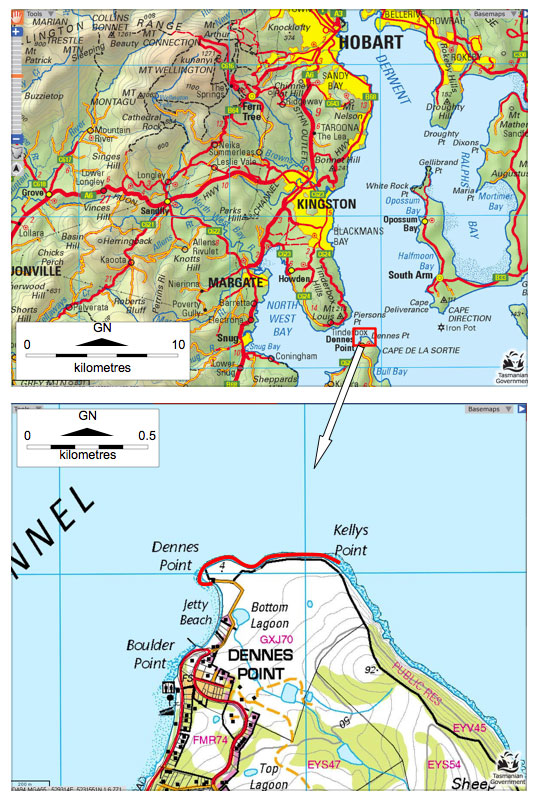
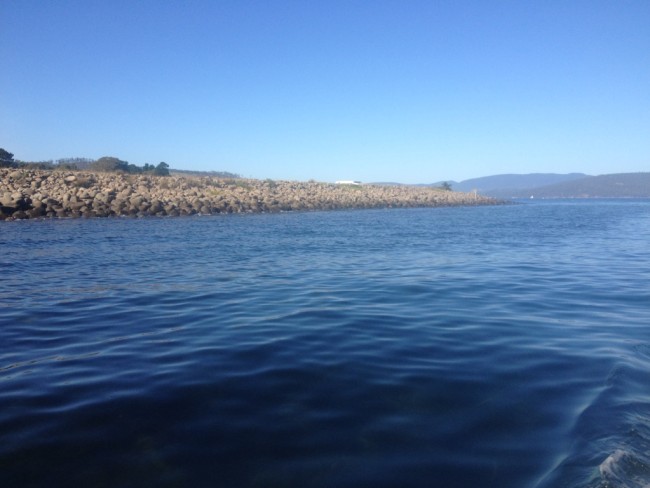
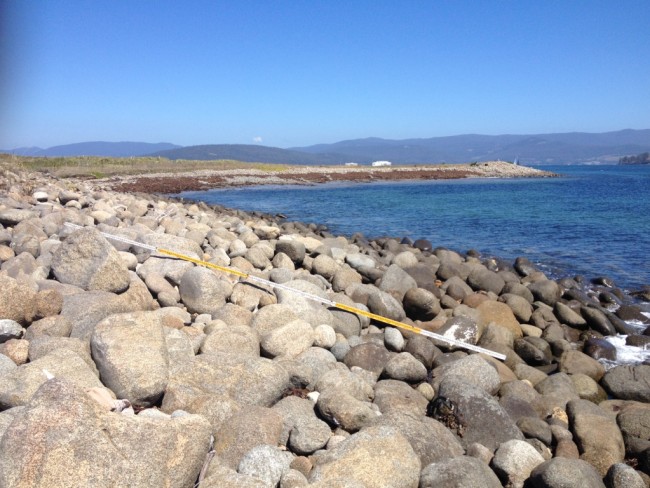
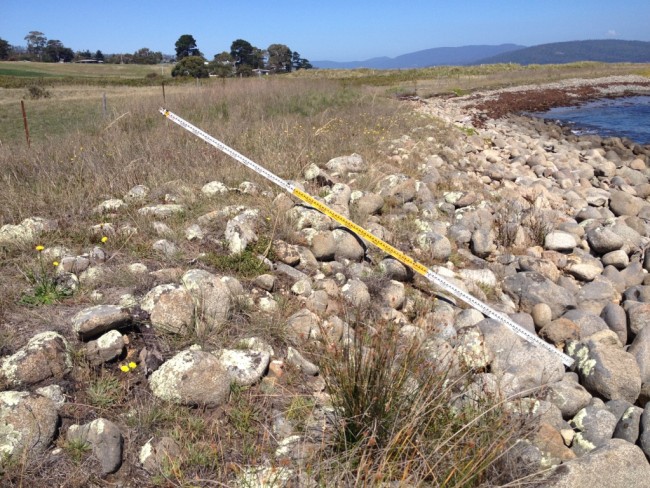
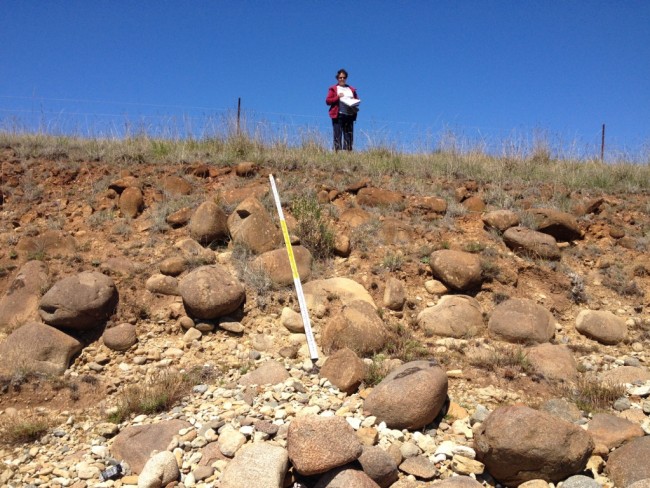
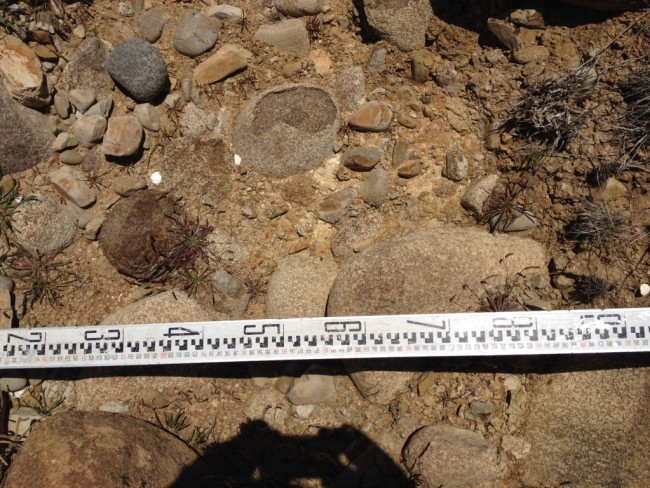
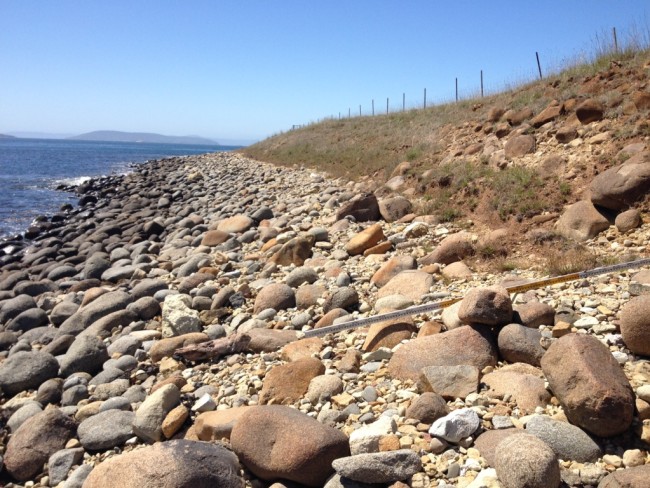
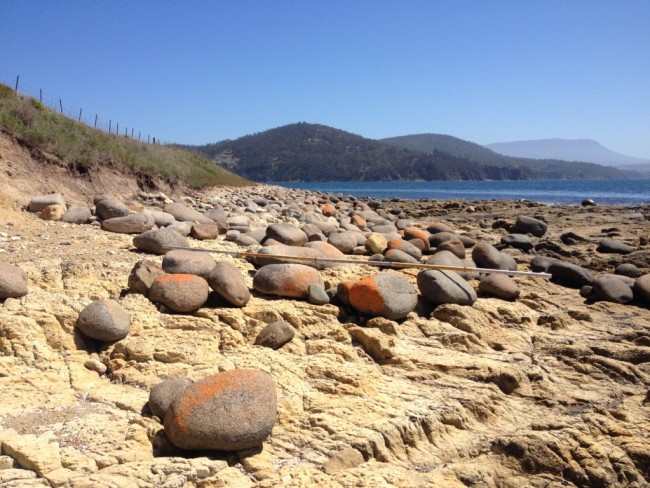
Leave a Reply